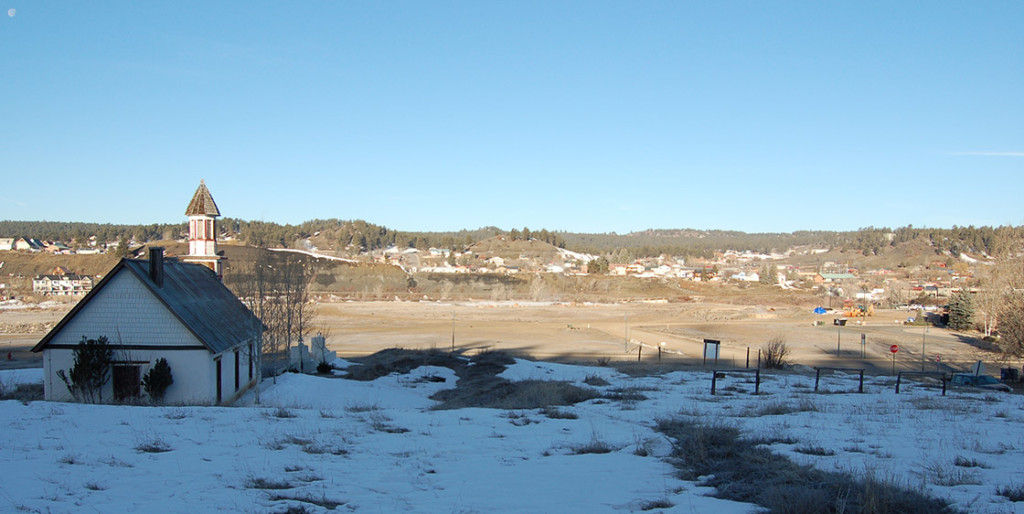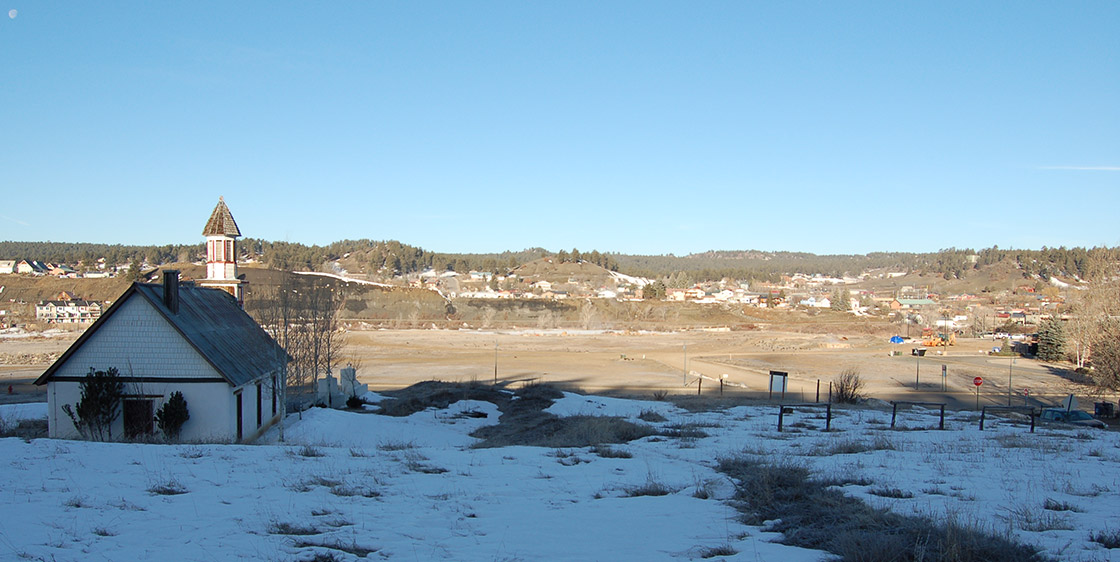Yesterday, I stopped by the County Assessor’s Office in the historic County Courthouse, and picked up a couple of little brochures. One was the “Abstract of Assessment and Levy of Taxes” for 2018. The other was the same document dated 2010.
Then I pulled out my pocket calculator.
According to the 2018 Abstract, the actual value of the county’s residential property, in 2018, was about $3.0 billion. The actual value of all other properties and resources — commercial, industrial, agricultural, and mineral resources — came to about $278 million. So then, a total property value of about $3.3 billion.
According to the 2010 Abstract, the residential property in Archuleta County had an actual value of about $3.8 billion, and the commercial-agricultural-mineral value was about $337 million. That comes to about $4.1 billion in total property values.
But we’ve had a bit of inflation since 2010, according to the US Bureau of Labor Statistics. If our property values in Archuleta County had simply kept pace with inflation, we should have had a county-wide value of about $4.7 billion by 2018. Instead — according to our Assessor’s Office — our property holdings were worth approximately $3.3 billion…
…About 70 percent of what the value theoretically ought to have been, had we simply been holding steady.
I have no idea what those facts have to do with the number of potholes I had to dodge, yesterday, driving home on Highway 160. Maybe nothing at all? Maybe everything? Maybe I’m just getting old and losing my memory, but I don’t recall Highway 160 looking this bad in the winter of 2010.
I hear real estate prices are going up, however, if you can find anything for sale in your price range. And the Assessor is working on new assessments for 2019.

As I stated in Part One of this editorial series, the February 7 community meeting hosted by the Springs Resort & Spa and the Springs Partners LLC provided an open, public forum for Archuleta County to weigh in with their ideas about the future development of 27 vacant acres just south and west of the Springs Resort. The Denver firm ‘tres birds workshop’ headed by architect Mike Moore has been charged with using those local ideas — if appropriate — to design ‘something.’ Reportedly, that ‘something’ is still in the planning stages, but whatever it is, we can assume it will meet the needs of the joint venture.
Numerous plans have been put forward for this particular vacant land over the past several decades, but none have come to fruition, and — as far as I know — none have included the solicitation of community input in the manner we saw on February 7. About thirty community members showed up for that forum, and I think half of them made comments.
Local resident and activist Cynda Green:
“The wetlands [adjacent to the 27 acres] is a huge asset. It’s so lovely, and it’s because of the wildlife and the cattails… the steam coming up, the Blue Herons… a while back, the previous owners of this property were talking about a 5th Street Bridge. I don’t know if that’s in your plans?”
Some of our readers may recall the South 5th Street Bridge controversy that began in 2015… and came to its conclusion in 2017. The former owners of the vacant 27-acre Springs Partners LLC property — who were also former owners of the Springs Resort — were trying to convince the Pagosa Springs Town Council to allow the taxpayers to build a $7 million bridge and connecting road, to improve access to their vacant property.
In response to Ms. Green’s question, managing principal of the Springs Resort, David Dronet, noted that he and his family have been coming to Pagosa as visitors for the past 12 years.
“My two boys — they’re 5 and 7 — learned to ski this year up at Wolf Creek… I fell in love with this town. People say, ‘You don’t pick Pagosa; Pagosa picks you.’ It picked us a long time ago, and it’s where we want to spend our time. And I say that, because when I’m explaining to some friends or partners when they come here, what does this geothermal resource means and how do we convey that… We view ourselves as ‘stewards’ of a resource. It’s tough to think that ‘ownership’ of a resource like this is even possible. So we view ourselves as stewards.
“Second, when we think about the potential here… Walkability. Something that I think is so important. And the connectivity that already exists with the [River Walk.]
“And the flip side is, there’s the management of traffic created by any type of development. So we have to think about how to manage and help in that process… the potential increase in traffic by any development has to be thought about. Personally — and this isn’t something that we’re planning for yet — I’d prefer not to have a bridge. I think it would bisect some very valuable land, and I’d hate to see it get close to the wetlands. Seems like that would have a negative impact. But we’ve got to solve the [traffic] problem. We’ve got to solve it in a most thoughtful way.
“So there isn’t an answer yet to that question. We’re here to do the research and learn.”
We don’t know if the South 5th Street Bridge concept is still alive, or not… but it sounds like Mr. Dronet and his team are willing to listen to the community. (Something the previous owners were reluctant to do.)
We also don’t know if the joint venture between the Springs Resort and developer Jack Searle will include any affordable housing. During the community meeting, I suggested that we have a crisis going on — a housing crisis — that will simply be made worse if the developers create only luxury projects. Fancy hotels. High-end second homes. Vacation rentals. Such projects generate the need for workers, but our community is not creating any homes for those workers to live in.
I looked up the Archuleta County ‘Building Permit Log’ for the month of July, 2018, and found that the community was adding 18 new single-family homes that month. The largest home measured 4,805 square feet, and the smallest was 1,437 square feet.
The median size, for all the homes, was 2,895 square feet.
Contractors around town tell me that a new home in Pagosa Springs will cost at least $140 per square foot. That would price the smallest home, built last July, at $201,000… and according to the Colorado Housing and Finance Authority (CHFA), I need an income of about $54,000 per year to afford such a home. (Assuming I can come up with a $20,000 down payment.)
That’s for the smallest home. The income needed to buy the average home built last July? CHFA suggests that I need a household income of more than $100,000 per year — assuming I have a $50,000 down payment — to afford the median-sized home.

